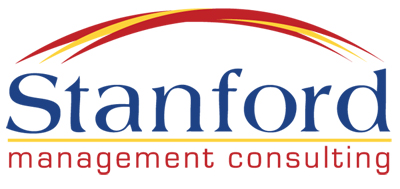 “Julia, What should I do to plan for an increase in sales for 2016?”
“Julia, What should I do to plan for an increase in sales for 2016?”
The budget is done, now what? One of the most important pieces of your plan for the New Year is to develop a strategic approach to achieving your forecast of sales while controlling all the cost of running the business. Sounds easy, right? For most small business owners, this is one of the biggest challenges. I cannot tell you how many times we hear “If we could just get more sales”! The truth is, without all the tools we have discussed this year in controlling cost and planning for profit, an increase in sales just means working harder with no increase in profit. You want to project an increase in sales using a strategic approach so you are spending resources effectively. Those resources are time, people, and money.
Remember before any strategy can be applied to your business you first must identify where you are and where you want to go. The strategic approach is simply how you are going to get there. Sound familiar? We use this same approach to strategically planning for an increase in sales. The top two challenges we find in businesses are 1) the sales forecast is unreasonable and 2) the sales forecast is simply a percent increase from the previous year’s sales.
SWOT Analysis
SWOT Analysis is a time-tested tool that allows you to focus your efforts around the Strengths, Weaknesses, Opportunities, and Threats facing your business. The Strengths and Weaknesses are internal while the Opportunity and Threats are external to the business.
A SWOT Analysis can be used for any planning exercise. It is simply how you plan to achieve the goals you have set. Use this approach to plan your sales strategy by defining activities that support sales goals. Identifying the SWOT in your business will help you accentuate the positive and overcome the negative activities that drive sales. This is a tough one for small businesses because many owners do not have a sales background.
SWOT- Strengths, Weaknesses, Opportunities, and Threats
Strengths: Think about the attributes of your business that will help you achieve your objective, increase in sales. Questions to consider:
- What do you do well?
- What products/ services are you known for?
- Are those products/ services profitable?
- Where are you most profitable in your business?
- What are your competitive strengths?
- What products/services are you ready to take to market that will increase your competitive strength?
- What do you do better than your competitors?
Weaknesses: Think about the attributes of your business that could hurt your progress in achieving your objective, increase in sales. Questions to consider:
- In what areas do you need to improve?
- What resources do you lack to improve these areas?
- What products/ services of your business are not very profitable?
- What would prevent you from taking new products/services to market?
- What costs you time and/or money?
- What are your competitive weaknesses?
- What do your competitors do better than you?
Opportunities: Think about the external conditions that will help you achieve your objective, increase in sales. Questions to consider:
- What are the sales goals you are currently working towards?
- How can you do more for your existing customers or clients?
- How can you use technology to enhance your sales process?
- Are there new target audiences you have the potential to reach?
- Are there related products and services that provide an opportunity for your business?
Threats: Think about the external conditions that could damage your business’s performance or prevent you from achieving your objective, increase in sales. Questions to consider:
- What obstacles do you face?
- What are the strengths of your biggest competitors?
- What are your competitors doing that you’re not?
- What’s going on in the economy?
- What’s going on in the industry?
- How can you adjust to respond to what is going on in the economy or the industry?
It isn’t enough to just “record a number” in the sales forecast and hope that you will meet those goals next year. You must look at the activities for each sales strategy used for the products/services that you offer. Using a one size fits all approach for a sales strategy doesn’t work. Define activities from each area that will enhance or improve your sales goals. Don’t over complicate this. Use the KISS design principle; keep it simple, stupid. When we fail to meet sales goals, we must adjust COGS and expenses to protect profit.
Consider the following when establishing sales and activities and strategies:
- Resources available- time, people, and money
- What changes do you need in the resources you have?
- Are you staffed appropiately?
- Does your maketing budget support what you are trying to accomplish?
- Have you identified your sales KPI’s and the frequency and methog for tracking?
- Have you established criteria to use when deciding when to abort a sales strategy?
- Make sales a priority for everyone! Each person on staff has a role in sales; from the close of the sale to the delivery of the product/service.
Planning for next year should be an exciting exercise! Look at what you have done well this year and capitalize on it. Take a close look at what you did not do well and ask yourself what changes need to happen in order to turn any negatives into positives. This can be a fun and motivating process if you don’t try to do it all in one sitting! Be realistic in sales goals – but challenge yourself and your staff. You will be amazed how much more focused you will be in 2016 with a solid plan.
Happy Planning and Happy Thanksgiving!
